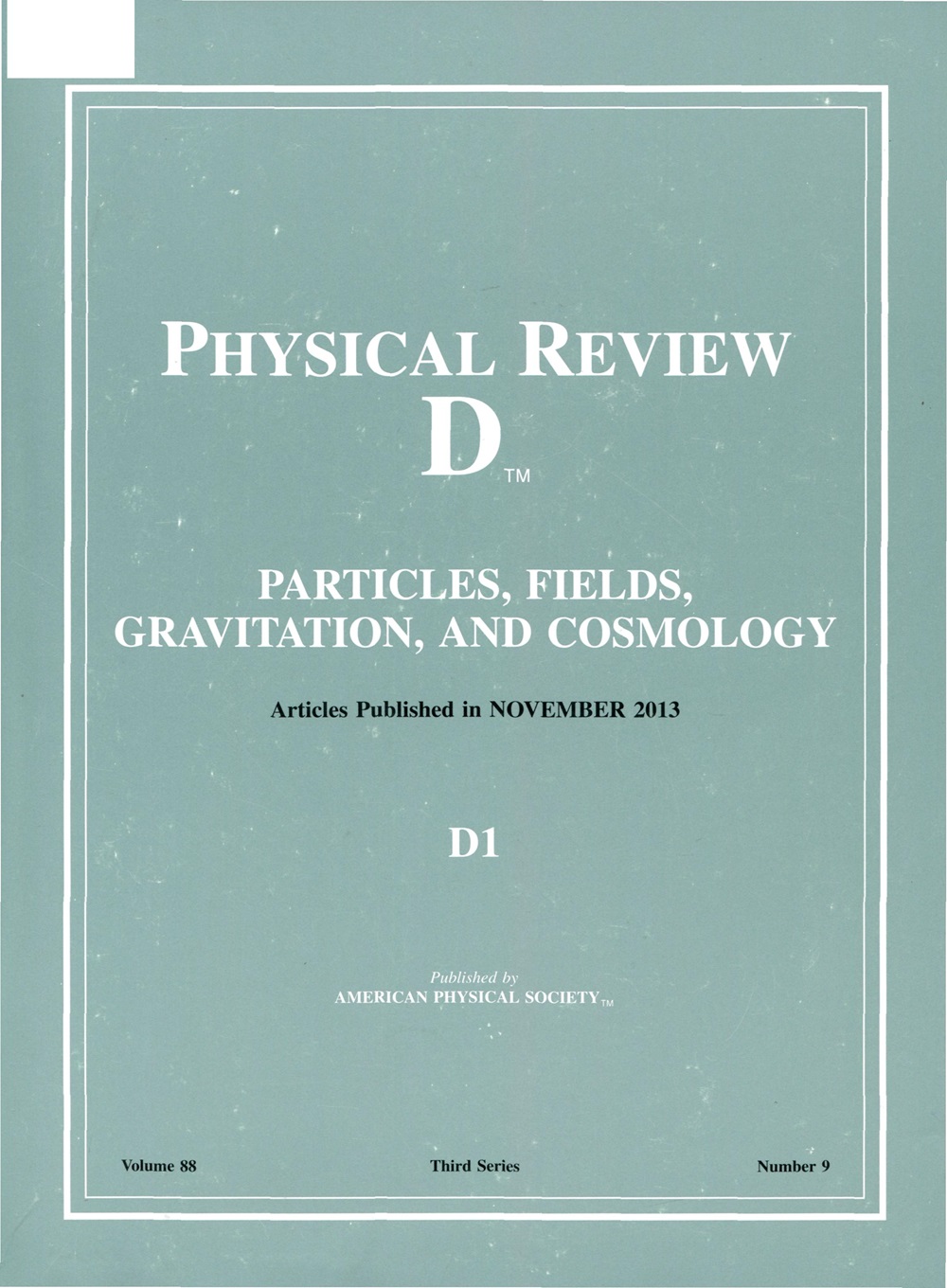Azimuthal fluctuations and number of muons at the ground in muon-depleted proton air showers at PeV energies
IF 5.3
2区 物理与天体物理
Q1 Physics and Astronomy
引用次数: 0
Abstract
Muon counting is an effective strategy for discriminating between gamma- and hadron-initiated air showers. However, their detection, which requires shielded detectors, is highly expensive and challenging to implement across large, environmentally sensitive areas. This work allowed us to establish for the first time that at PeV energies the gamma/hadron discriminator based on the new LCm variable have proton rejection levels of the order of在PeV能量下的介子耗尽质子空气阵雨中,地面上的方位波动和介子数
μ子计数是区分伽玛和强子引发的空气阵雨的有效策略。然而,它们的检测需要屏蔽探测器,这是非常昂贵的,并且在大型环境敏感区域实施具有挑战性。这项工作使我们首次建立了在PeV能量下,基于新的LCm变量的伽玛/强子鉴别器具有10−4数量级的质子排斥水平,优于基于μ子数量计数的鉴别能力。本文对PeV能量下的μ子耗尽阵雨进行了深入的研究,并提出了为达到所需的O(106)模拟阵雨而设计的模拟策略。2025年由美国物理学会出版
本文章由计算机程序翻译,如有差异,请以英文原文为准。
求助全文
约1分钟内获得全文
求助全文
来源期刊

Physical Review D
物理-天文与天体物理
CiteScore
9.20
自引率
36.00%
发文量
0
审稿时长
2 months
期刊介绍:
Physical Review D (PRD) is a leading journal in elementary particle physics, field theory, gravitation, and cosmology and is one of the top-cited journals in high-energy physics.
PRD covers experimental and theoretical results in all aspects of particle physics, field theory, gravitation and cosmology, including:
Particle physics experiments,
Electroweak interactions,
Strong interactions,
Lattice field theories, lattice QCD,
Beyond the standard model physics,
Phenomenological aspects of field theory, general methods,
Gravity, cosmology, cosmic rays,
Astrophysics and astroparticle physics,
General relativity,
Formal aspects of field theory, field theory in curved space,
String theory, quantum gravity, gauge/gravity duality.
 求助内容:
求助内容: 应助结果提醒方式:
应助结果提醒方式:


